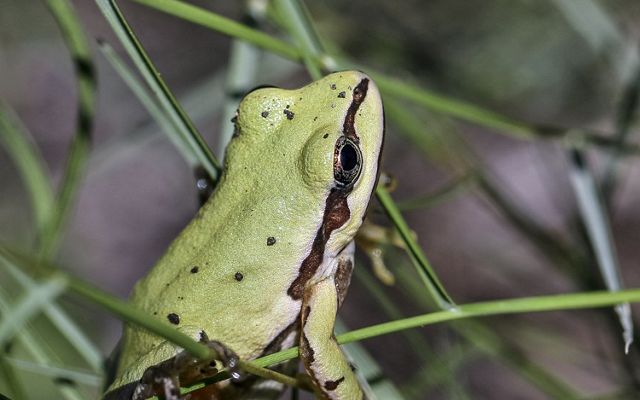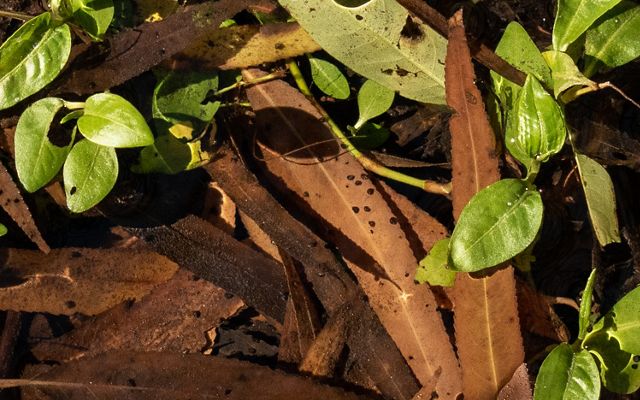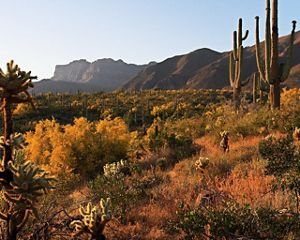
Protecting Canelo Hills Cienega Preserve and Endangered Orchid Habitat for 50+ Years

The Canelo Hills Cienega Preserve, located in southeastern Arizona, is a critical wetland ecosystem protected by The Nature Conservancy (TNC). This cienega, or desert wetland, represents one of the few remaining wetland habitats in the region, playing a vital role in maintaining biodiversity and water conservation in an arid landscape.
TNC was proud to collaborate with Desert Botanical Garden on its Orchid Fever exhibit, which kicked off March 15, 2025. TNC’s work in the Canelo Hills Cienega Preserve safeguards habitat for a rare species of orchid known as the Canelo Hills ladies'-tresses (Spiranthes delitescens). This endangered orchid is known to historically exist at just five populations in southern Arizona, but recent declines have reduced it to just two remaining locations in the wild.
Desert Botanical Garden has been a key partner for the past decade in helping to advance our understanding of the species and restoring its habitat conditions.

The Role of The Nature Conservancy
TNC is a global environmental organization dedicated to the conservation of land and water resources. Established over 70 years ago, it operates in more than 80 countries and territories, using science-based strategies to protect critical ecosystems.
The acquisition of the Canelo Hills Cienega Preserve was driven by the need to safeguard one of the last intact cienegas in the Southwest, ensuring the continued function of this unique wetland. The preserve was purchased from the Knipe family in 1969, making it the second preserve in Arizona's system. In 1974, it was designated a National Natural Landmark for being one of the least disturbed extensive Southwestern desert wet grasslands.
Historical and Ecological Significance
Historically, cienegas were widespread across Arizona and the greater Southwest, providing essential water sources for indigenous communities, early settlers, and diverse wildlife. However, due to agricultural expansion, groundwater depletion, erosion, and climate change, many cienegas have disappeared. The Canelo Hills Cienega Preserve remains one of the few surviving examples, offering valuable insights into wetland ecology and conservation efforts.
Cienegas are biodiversity hotspots, supporting a range of endemic and threatened species. The Canelo Hills Cienega provides habitat for species such as the Gila topminnow (Poeciliopsis occidentalis) and the Gila chub (Gila intermedia), both of which rely on O’Donnell Creek’s critical habitat.
Beyond its role in supporting biodiversity, the cienega functions as a vital part of the local hydrological system. Wetlands act as sponges, absorbing and filtering water while replenishing groundwater reserves. For example, a 2018 study used sediment cores from Canelo Hills and three other cienega sites to reconstruct climate patterns over the past 8,000 years. The study revealed cycles of El Niño weather events responsible for past aquifer recharge, providing critical data for understanding regional water sustainability.


Conservation and Research
Ranching and land management have played a role in shaping the cienega’s history. The Nature Conservancy received the first in-stream flow water rights permit in Arizona for O’Donnell Creek in 1978. In 1979, the organization conducted its first prescribed burn at the preserve, leading to a significant increase in the population of Spiranthes delitescens, from 40 to 196 non-dormant plants. Experiments throughout the 1990s continued to research orchid responses to prescribed fire, with mixed results that were complicated by drought and other site changes. As a result, the orchid has not been seen at the preserve since the early 2000s.
The preserve contains diverse array of plant species, including Juncus species, seep monkeyflowers (Mimulus guttatus), and spikegrass (Eleocharis macrostachya) in the understory. Goodding willow (Salix gooddingii), cottonwood, walnut, and golden currant (Ribes aureum) thrive along the stream providing essential habitat for wildlife.
Stewardship of this unique landscape involves several methods of ecological restoration. Abatement of non-native vegetation, including Himalayan blackberry, Johnson grass, and Horehound, is an annual activity that supports maintaining biodiversity and protecting native species.
With the recommendation of Desert Botanical Garden, the reduction in the number of mature juniper trees in the riparian and floodplain zones along O’Donnell Creek has been a priority in recent years for preserving precious groundwater resources and improving orchid habitat.
Planning is underway for the first prescribed fire on the preserve in over 20 years. Post-burn surveys of emergent vegetation and subsequent plantings are anticipated as benefits to the local population of Spiranthes delitescens, in addition to other species.
The preserve is closed to the public and managed in partnership with Friends of Canelo. By protecting and studying this cienega, scientists and conservationists are developing strategies to sustain wetland habitats in arid regions, ensuring their ecological functions persist despite environmental pressures.

Keep In Touch
Sign up to receive monthly updates from Arizona. Preview a Natures News email.


